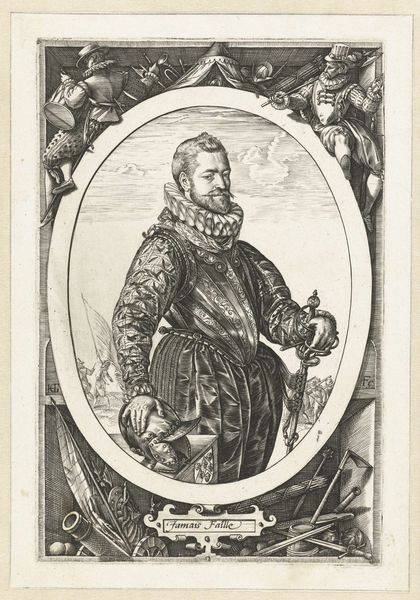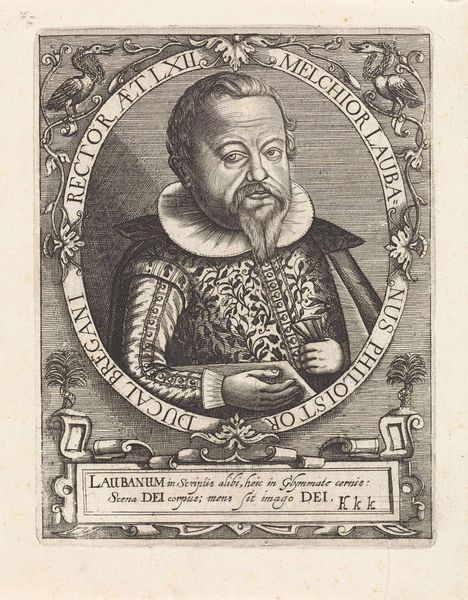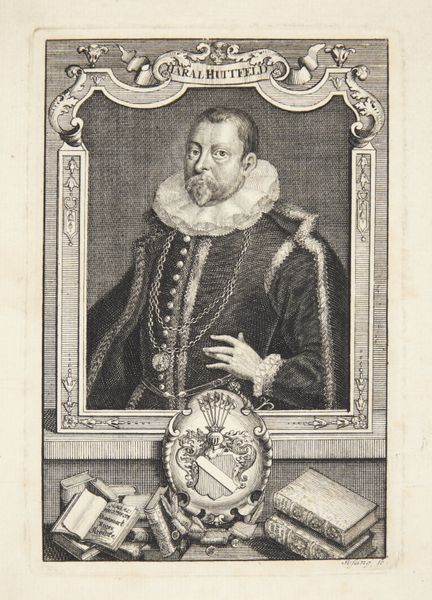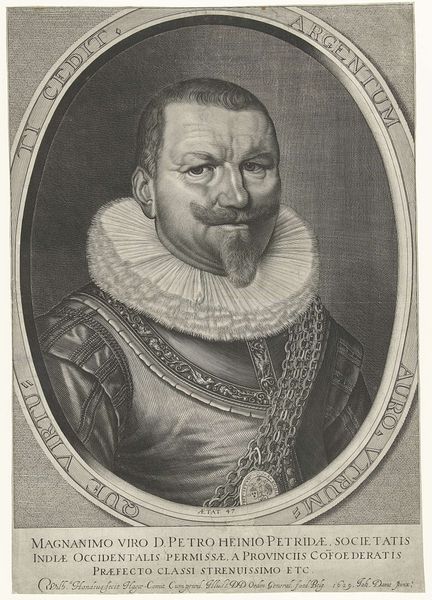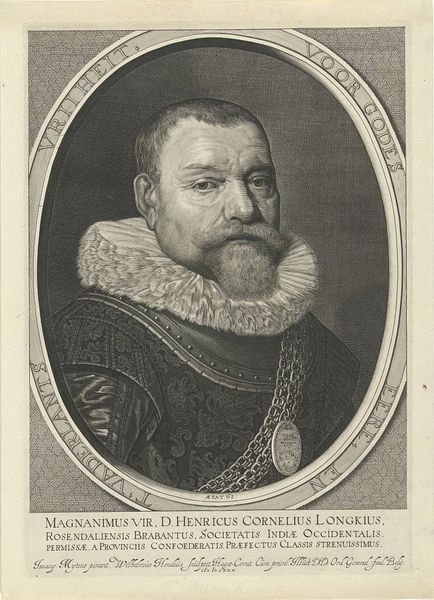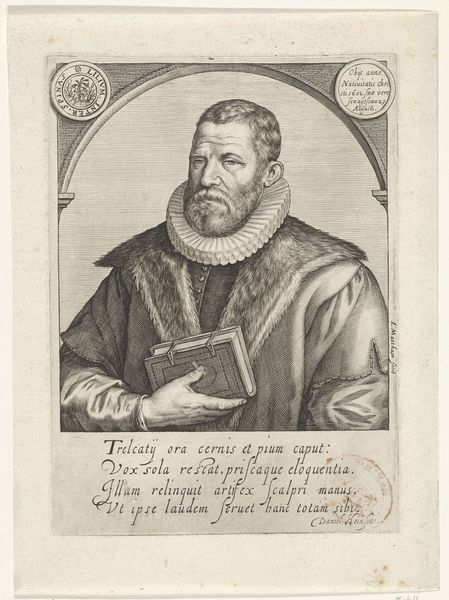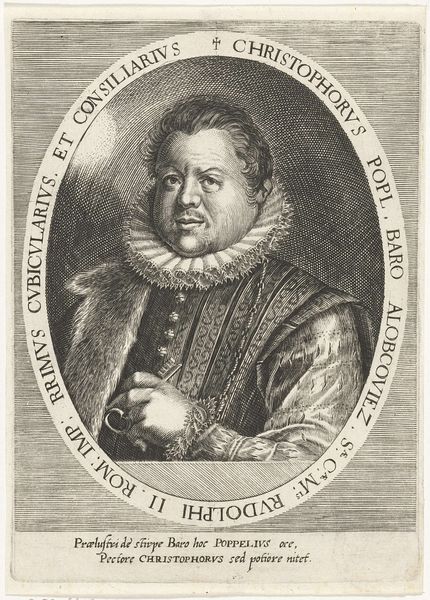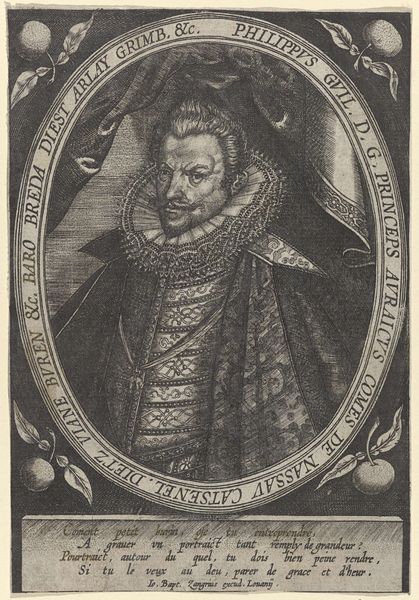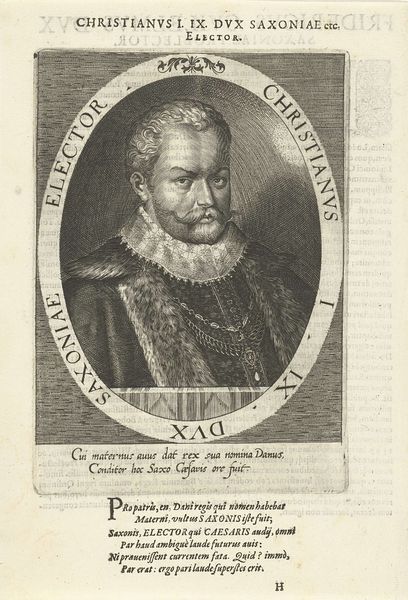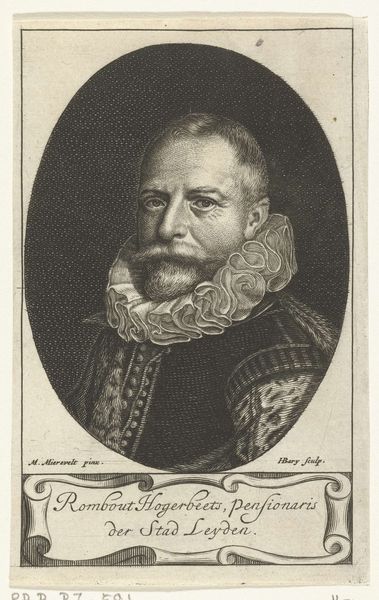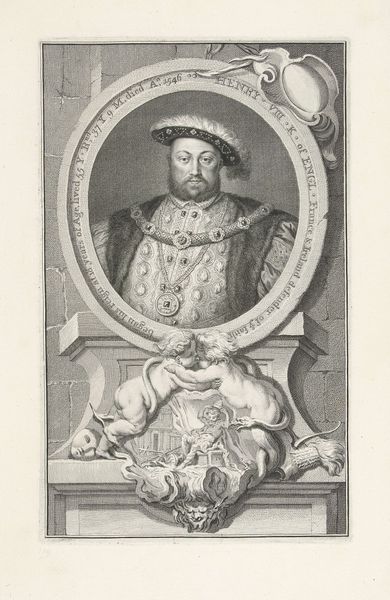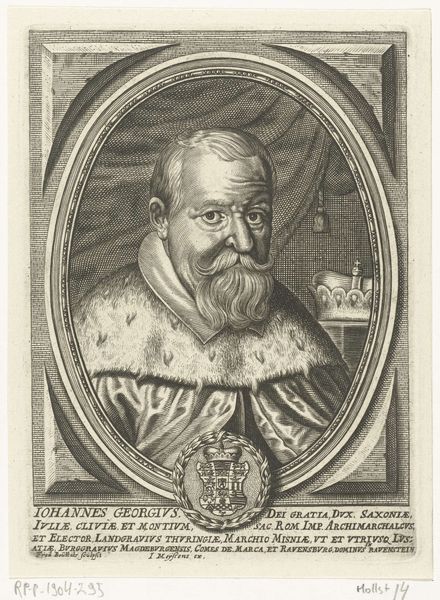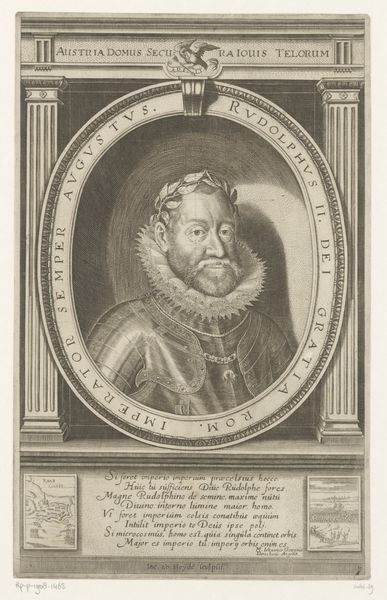
print, engraving
portrait
figuration
11_renaissance
line
history-painting
northern-renaissance
engraving
Dimensions: height 105 mm, width 78 mm
Copyright: Rijks Museum: Open Domain
This is Wierix's "Portrait of a Man and Four Coats of Arms," made in the late 16th or early 17th century. The piece is striking in its formal arrangement; the central, circular portrait is balanced by heraldic emblems, creating a symmetrical yet intriguing composition. Wierix employs line engraving to meticulously detail the man's features and attire. The ruff around his neck and the texture of his hair contrast with the smoother planes of his face. The heraldic emblems, similarly rendered, flank the portrait, adding layers of meaning through symbolic representation. Consider the structural elements here—the circle and the square—as signs operating within a semiotic system. The circles, framing the portrait and emblems, suggest completeness, while the heraldic symbols allude to identity, lineage and status. The visual language prompts us to decode the social and cultural context of the sitter. The artwork serves not only as a portrait but as a carefully constructed statement about identity, engaging viewers in a process of interpretation that continues to evolve with time.
Comments
No comments
Be the first to comment and join the conversation on the ultimate creative platform.
